.jpg)
Bot. Mag. t. 374 (1792), as Cyrilla pulchella L'Hér.
Full name and orig. publication: Achimenes Pers., Syn. pl. 2: 164 (Nov. 1806), nom. cons., non Achimenes P.Browne (1756) nec Achimenes Vahl (1791) (Scrophulariaceae).
Etymology: Possibly a modification of Achaemenis, a miraculous herb of Demokrit, which had strong effect on culprits so that they confessed their sins under pain; or (more probably) named after Achaimenes (the Persian Haxamani), the mythical ancestor of the Persian dynasty of Achaemenids.
Synonyms: Cyrilla L'Hér. (1791, "1785"), Trevirana Willd. (1809), Locheria Regel (1848), Guthnickia Regel (1849), Dicyrta Regel (1849), Eumolpe Decne. (1850), Scheeria Seem. (1853), Plectoploma Hanst. (1854).
Infrafamilial position: Gesnerioid Gesneriaceae (Gesnerioideae) - Gloxinieae.
Description: Terrestrial herbs with scaly rhizomes; stems erect or decumbent, unbranched. Leaves opposite, iso- or anisophyllous. Inflorescences axillary, of single flowers or two to three in a cyme. Sepals free. Corolla usually showy, erect or oblique in the calyx, either tubular with a flat spreading limb, or obliquely funnelform, with a basal sac or spur on the upper side; limb nearly regular to bilabiate, with the three lower lobes larger, lobes broad, spreading or nearly erect, entire or fringed. Stamens four, didynamous, included in the corolla; filaments slender, adnate to base of corolla tube; anthers apically coherent. Nectary annular, cuplike. Ovary semi- to completely inferior, style curved, stigma bilobed, stomatomorphic or cupulate. Fruit a dry, bivalved capsule, with conical apex.
Chromosome number: 2n = 22.
Species number: 24.
Species names (incl. publication and synonyms): See Skog, L.E. & J.K. Boggan. 2005: World checklist of Gesneriaceae: http://persoon.si.edu/Gesneriaceae/Checklist.
Type species: Achimenes coccinea (Scop.) Pers., typ. cons. = A. erecta (Lam.) H.P.Fuchs
Distribution: Mexico and C America, A. erecta extending to the Caribbean and Colombia, A. pedunculata to Ecuador (naturalised?).
Ecology: The species are usually found in wet areas in forests, on shaded banks near streams or on damp rock outcrops.
Notes: The sectional classification established in the last century, essentially based on flower and stigma shape, is systematically irrelevant (Wiehler 1983). To some degree it reflects the various pollination syndromes present in the genus: ornithophily (A. erecta), psychophily (A. longiflora), gynandro-euglossophily (A. mexicana), melittophily (A. warszewicziana). Some species are popular green-house ornamentals.
Selected references: Wiehler, Selbyana 1: 374-404 (1976), emend.; Arnold, The Gesneriad Register: Achimenes (1969); Morton, Baileya 10: 147-154 (1962), sect. rev.; Skog, Ann. Missouri Bot. Gard. 65: 789-793 (1979), reg. rev. (Panama); Skog, Monogr. Syst. Bot. Missouri Bot. Gard. 85: 1114-1128 (2001), reg. rev. (Nicaragua).
Bibliography: See Skog, L.E. & J.K. Boggan. 2005. Bibliography of the Gesneriaceae. 2nd edition: http://persoon.si.edu/Gesneriaceae/Bibliography.
Illustrations:
.jpg)
|
A.coccinea (Scop.) Pers., typ. cons.
= Achimenes erecta (Lam.)
H.P.Fuchs
Bot. Mag. t. 374 (1792), as Cyrilla pulchella L'Hér. |
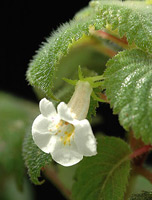
|
Achimenes candida Plant of the week, Smithsonian Institution,http://persoon.si.edu/plofweek.index.cfm phot. L. Brothers |
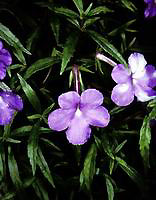
|
Achimenes cettoana H.E.Moore
Cult. RBG Edinburgh, phot. A. Weber (1998) |
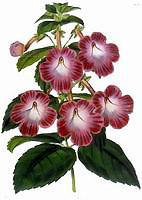
|
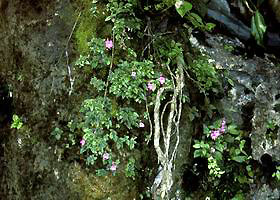
|
Achimenes grandiflora
(Schiede) DC.
Left: Bot. Mag. t. 4012 (1843) |
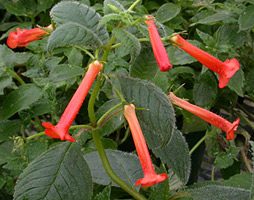
|
Achimenes heterophylla DCPlant of the week, Smithsonian Institution,phot. L. Brothers, http://persoon.si.edu/plofweek.index.cfm |
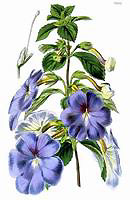 |
Achimenes longiflora DC.
Bot. Mag. t. 3980 (1842) |
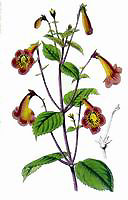
|
Achimenes pedunculata Benth.
Bot. Mag. t. 4077 (1844) |
last modified: 2007-01-08